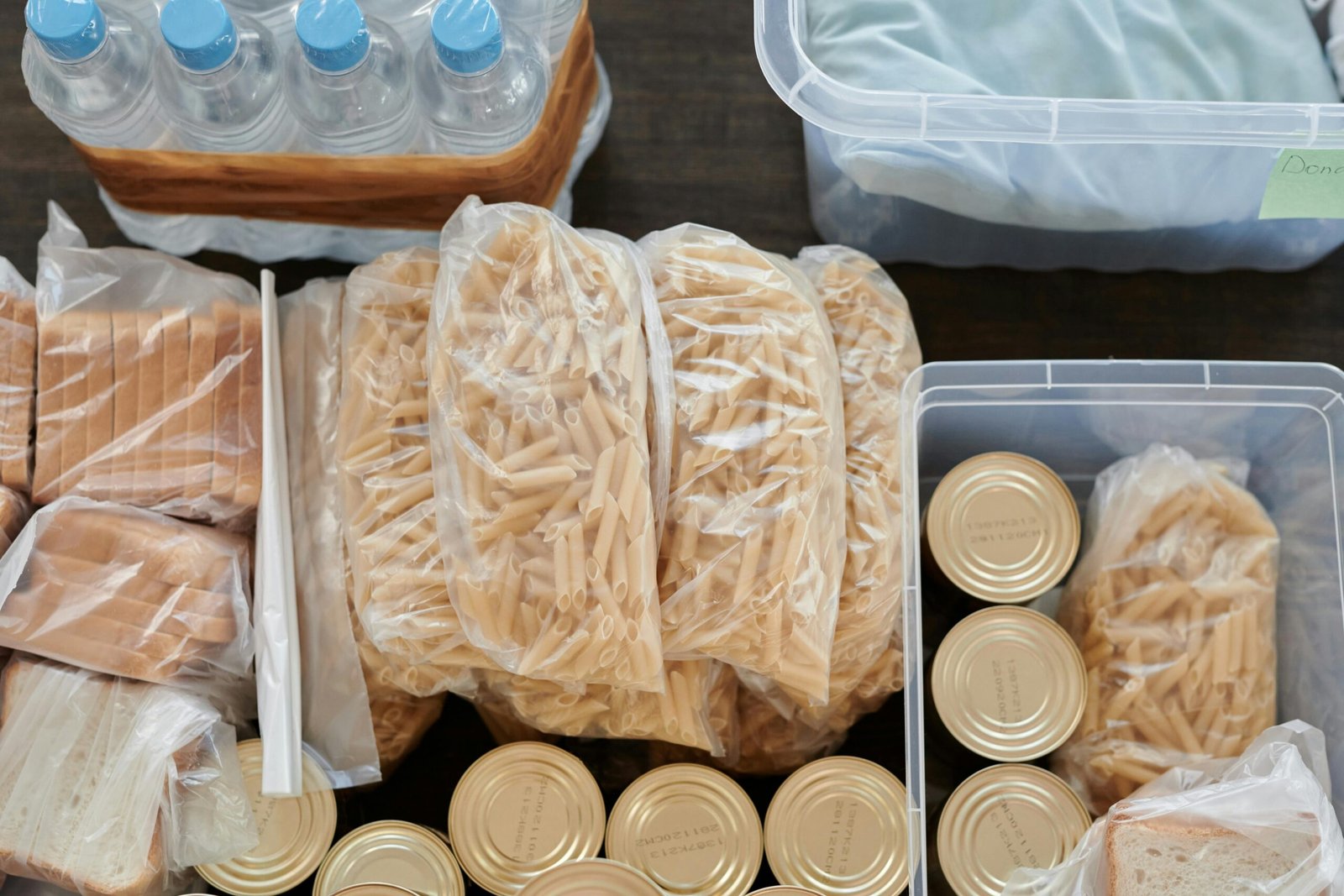When hurricane season approaches, reliable food storage isn’t optional — it’s essential. Power outages, blocked roads, and store shortages can happen overnight. The right emergency food kit keeps your household nourished, calm, and focused when uncertainty strikes.
Below, we’ll explore the best hurricane-ready food kits, why My Patriot Supply is a top choice for dependable long-term storage, and how other brands compare for variety, portability, and value.
Why a Hurricane-Ready Food Kit Matters
During a hurricane, you may lose power and refrigeration for days. Stores can run out of stock or stay closed. A dependable emergency kit ensures:
- Ready-to-eat or minimal-prep meals when cooking isn’t possible
- Long shelf life (often 20–25 years) so you can plan once and store confidently
- Compact, flood-resistant packaging to protect your investment
- Balanced calories and nutrition to sustain energy through stressful days
These kits aren’t just for survival — they bring stability and comfort in chaos.
The Short Answer: What to Buy for Hurricane Season
If you want to prepare efficiently, build your core around My Patriot Supply and add a few secondary kits for variety.
- Start here: My Patriot Supply’s Ready Hour line — 72-Hour Kits and 4-Week Food Supply buckets — form a strong, long-lasting foundation.
- Add variety: Throw in a few Mountain House pouches for flavorful, on-the-go meals.
- Stretch your calories: Add a budget-friendly bucket from Augason Farms or ReadyWise for extra servings.
This combination ensures durability, taste, and flexibility — the essentials of hurricane preparedness.
Best Emergency Food Kits by Scenario
My Patriot Supply (Ready Hour) – Best Overall for Hurricane Preparedness
If you want reliability and simplicity, start here. Their stackable buckets store cleanly and resist flood damage, while meals are packed in resealable, multilayer pouches with a 25-year shelf life.
Highlights:
- 2,000+ calories per day average
- U.S.-made ingredients and packaging
- Ships discreetly, ideal for emergency preppers
- Wide range from 72-Hour to 3-Month supplies
You can explore their full emergency food range at My Patriot Supply — an easy starting point for long-term readiness.
Mountain House – Best for Taste and Portability
These pouches are excellent for short-term or mobile situations. Just add hot water — or even room-temperature water in a pinch. Great for go-bags, first responders, or quick meals.
Pros: Lightweight, flavorful, portable
Cons: Shorter shelf life (~30 years but smaller volume), higher cost per serving
Augason Farms – Best for Bulk and Budget
Perfect for stocking a pantry or garage, Augason Farms kits focus on calories per dollar. Meals are hearty and shelf-stable for up to 25 years.
Pros: High calorie count, budget-friendly, wide product range
Cons: Larger cans, heavier to move, longer prep time
ReadyWise – Balanced Choice for Families
If you want a blend of affordability and variety, ReadyWise buckets are dependable. Their freeze-dried meals come in sealed pouches within stackable tubs.
Pros: Tasty and easy to prepare, good value
Cons: Some meals require warm water for best results
Nutrient Survival – High-Protein Upgrade
Designed with fortified ingredients and complete nutrition in mind, this is an excellent supplement for adults with higher energy demands.
Pros: Nutrient-dense, good for active users
Cons: Expensive and smaller pack sizes
Quick Comparison
| Brand | Best For | Shelf Life | Key Strength | Ideal Use Case |
| My Patriot Supply | All-around hurricane readiness | 25 years | Reliable storage & solid calories | Family survival base kit |
| Mountain House | Portability & taste | 30 years | Easy prep, great flavor | Go-bags, fast meals |
| Augason Farms | Budget bulk | 25 years | High calorie per dollar | Pantry & bulk storage |
| ReadyWise | Balance of value & variety | 25 years | Family-friendly menus | General preparedness |
| Nutrient Survival | High-protein nutrition | 25 years | Fortified & performance-based | Adults & active users |
How to Choose the Right Hurricane Food Kit

- Check the calorie count. You’ll need about 2,000 calories per person per day.
- Verify shelf life and packaging. Look for airtight, moisture-resistant seals.
- Consider preparation needs. Cold-water meals are invaluable when power is out.
- Test taste and texture. Buy one small kit first to gauge what your family likes.
- Store properly. Keep kits in a cool (55–70°F), dry spot, away from sunlight.
Example: Smart Setup for a Family of Four
- Step 1: Two 4-Week My Patriot Supply Buckets (core calories)
- Step 2: 8–12 Mountain House pouches (quick, tasty options)
- Step 3: One Augason Farms bucket for extra carbs or soups
- Step 4: Add no-cook foods — peanut butter, canned meats, nuts, and electrolyte packs
This blend covers four weeks of balanced meals, even with limited power or water.
Final Takeaway: Preparedness Brings Peace of Mind
A dependable food kit isn’t just about survival — it’s about confidence. Hurricanes are unpredictable, but your readiness doesn’t have to be.
Start your preparedness plan today with My Patriot Supply’s Ready Hour collection, and add complementary kits for variety and comfort. When the next storm comes, you’ll know your family’s meals are safe, sealed, and ready.
Frequently Asked Questions
Q: How long does My Patriot Supply food really last?
A: When stored in a cool, dry area, Ready Hour meals can last up to 25 years without losing nutritional value.
Q: How many servings should I plan for?
A: For a family of four, expect around 120 servings for a 30-day supply (2,000 calories per person per day).
Q: Are My Patriot Supply meals cooked or freeze-dried?
A: Most are freeze-dried or dehydrated, requiring only water for preparation.
Q: How should I store hurricane food kits?
A: Keep them off the floor, away from sunlight and humidity. Check seals yearly.
Q: What makes hurricane-specific kits different?
A: They use water-resistant packaging, no-cook meals, and compact stacking buckets — ideal for storm-prone regions.

